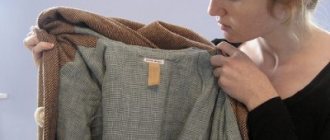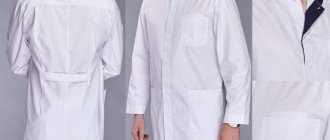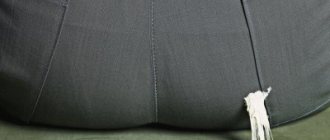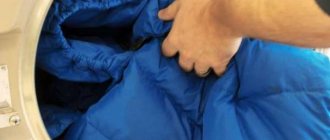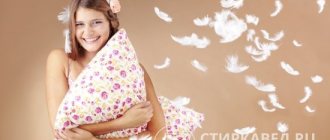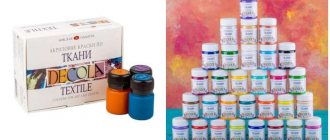Today we will not compare the characteristics of new and old generation faux fur and designate them differently, as I did in a very detailed introductory article about Eco-fur. So by both Eco-fur and faux fur, I will mean new generation fur. This is an article about it and in it I will tell you why you should not worry about caring for this new material, I will give answers to popular questions and a bunch of other useful tips on washing, drying and storing Eco-fur.
Author of the article: Hostess.
My name is Natalya and I have been managing my home professionally for more than 15 years. Saving my extended family's favorite things; I protect our house from fleas, midges, bloodsuckers and other rodents; I find faithful electronic assistants in household chores. And I am happy to pass on this entire experience to you)
Do you also want to become a Hostess on our blog? There's enough room for everyone! Just write to us via the “contact” form)
Eco-fur suits everyone!
As always, when a new high-tech material appears, people treat it with suspicion. And if the humane method of producing Eco-fur and its “natural” appearance pleases people who care about the environment, then many questions arise about washing a blanket or fur coat made of faux fur.
How to wash Eco-fur in a washing machine.
Yes, faux furs can be machine washed and this is a big relief for everyone. The ability to be washed gently is a huge plus of this fabric. The main thing is to follow simple rules.
- Before washing a fur coat or shaggy pillowcase - get rid of dust. Take a bamboo stick or a carpet beater; you can also use a simple soft brush. Do not be overzealous so as not to knock the fur out of the product along with the dust. Of course, this should be done not in the apartment - you don’t want to inhale dust and small hairs and then collect it all over the apartment. It's best to do this outside.
I came across recommendations Place fur side down on a sheet and beat out. You can do this, but in my opinion it is less effective. Dust will not go anywhere from the house and you still need to shake out the sheets later. Double work.There is another good way - turn on the vacuum cleaner at low suction power, and vacuum the product strictly along the pile with a nozzle for upholstered furniture.
- Then soak for 15-20 minutes in a bowl of warm water, having previously diluted the delicate wash gel there. Do not leave the fur in contact with water and detergents for a long time - it does not like this.
- Ruffle the fur coat a little in the basin and let the water drain a little, then put it in the washing machine. The available pre-soak wash cycle in the machine eliminates hand soaking. You can immediately put a dry product into the machine.
- If you have a “delicate” mode or modes for silk, wool, turn them on.
Delicate mode only! If this is not the case, set it to 30-40 C (no higher!), short wash (express) and turn off the spin cycle. These actions will prevent possible deformation and shrinkage of the material. - After the machine has finished working, remove the product and hang it to drain . Place small items on a wire rack or in a clean sink, place outerwear on hangers and hang them over the bathtub.
⚠️ Remember that the spin must be turned off! I read that some people wring it out, but then there’s more fuss with drying and straightening the broken pile, so don’t complicate your task.
The item has been washed. About drying below)
What to do if you can’t wash it
If the label indicates that the fur is not washable, you can use the following methods to remove stains:
- Dust and fresh dirt particles are removed using a suitable brush or vacuum cleaner. You can also knock out or shake the product.
- Fresh stains are removed with starch or soda. The bulk substance should be applied to the problem area and left for 15–20 minutes. During this time, starch (soda) absorbs dirt. At the end of the allotted period, the fur coat (collar) is turned inside out and shaken out. To remove residual soda (starch), the fur must be cleaned with a brush.
- Traces of fat and greasy stains are cleaned using a mixture of 1 tsp. alcohol (allowed to replace with gasoline) and 1 tbsp. l. starch. Both substances are mixed to a mushy state. Then the resulting mass is applied to the contaminated areas, left for 10 minutes and combed out with a brush (removed with a cotton swab).
If the described methods do not bring the required result, then the fur product should be dry cleaned.
How to wash faux fur by hand.
- The first stage of cleaning from dust and soaking in soapy water is exactly the same as for machine washing.
- If the item is small, gently “swirl” it in the basin and squeeze it lightly. If it’s a fur coat or a blanket, pour a bath - any size will fit in it. Press the large item to the bottom so that it is completely wet.
- Eco-fur is a delicate fabric, so be gentle with it. You cannot rub the fur like regular underwear , otherwise the lint may creep in. Rub gently with a soft brush or hand, paying particular attention to areas that are more heavily soiled - bottoms, pockets, sleeves and the inside of the collar.
- Rinse the product in several waters . First use the same warm as when washing, then cooler and finally cold. There should be plenty of water to thoroughly wash away cleaning agents and remaining dirt. Actively use the tap or shower; running water will perfectly remove all excess from the matter.
- Remove the item from the water and let it drain thoroughly, in the same way as after machine washing. a couple of teaspoons of vinegar to the last rinse water .
- You can’t wring out faux fur , otherwise you can ruin the base by “twisting” it and breaking the pile. After the main water has drained, wrap the product in a towel and press lightly - most of the moisture will go into it, drying will be faster. You can skip this stage - let the item hang, drain and dry on its own.
- If a small area , there is no need to wash the entire item. Dilute washing powder or washing gel in a liter of water (shampoo is also suitable), stir well and wipe the dirty area with a sponge soaked in a soapy solution. Afterwards, rinse the treated piece under running water.
Wash by hand
You need to resort to this option if the item has a long pile - the fur can get tangled in the machine so much that it will be difficult to comb it. To prevent this from happening, you need to dip the product into the basin in one direction, holding it by the shoulders. The pile lies in the direction from top to bottom, so when you immerse it in water, the fur will straighten out to the sides, and when you lift it out of the water, it will lie back in the right direction.
You will also have to wash massive fur bedspreads by hand, since they will not fit in the washing machine. Do not try to push it in there by force, because fur items absorb a lot of water and become heavy - this can lead to damage to the washer, because it will not support the weight.
First, soak the product in soapy water and squeeze it in dirty areas. Next, rinse the item in warm water for the first time, and in cold water for the second time, this will restore the shine to the fur. You can also add a little vinegar to the second rinse, so the pile will become smoother.
How to properly dry a product.
- To prevent the fur from being high with “icicles” or with “creases” after washing, it must be fluffed. While drying, carefully comb the fur along the pile with a brush with sparse rounded teeth. Do not go too deep into the material, so as not to snag and damage the base. Superficial movements will be enough to smooth and straighten the pile on the collar or straighten the faux fur on the hood. A slicker brush for cats or dogs , which can be purchased at any pet store, is best suited for this purpose
- Dry the product away from heating devices, do not use a hair dryer so as not to damage the fiber.
- Hang your outerwear on hangers in a well-ventilated area . It will take longer to dry in the bathroom, because there is a lot of moisture there.
- Never dry Eco-fur in the dryer. High temperature is death for synthetics . 99% of the time, after this it will only be possible to use it in handicrafts in parts or give it to children as toys, because the pile will deteriorate, stick together, and the base will shrink.
Comb gently and carefully
⚠️ To the direct question - is it possible to iron Eco-fur, I will answer directly - no! Steaming and ironing, even through gauze, is also prohibited. Faux fur is afraid of high temperatures from any source. If the pile has become wrinkled, wet it (preferably with a spray) and comb it, it will “sag” and smooth out.
Dry cleaning of Eco-fur at home and getting rid of odor.
If you are not sure that your product can be washed or this is directly stated on the manufacturer’s label, use these simple methods for caring for an Eco-fur coat.
Method one - minimum moisture.
- Lather a spoonful of shampoo (no conditioner!) or delicate wash gel in a glass of warm water.
- Hang your parka or sheepskin coat on hangers over the bathtub and wipe the fur with a sponge and foam.
- As a “rinse”, run along the pile with a clean, damp sponge.
- Comb gently and dry completely naturally.
Method Two - completely dry
We will need a small package of starch or flour.
- Place a faux fur collar or hat on a rack over the bathtub and sprinkle the product liberally onto the fur.
- Rub gently with your hand so that the powder penetrates everywhere. Leave the item for 5-10 minutes until the starch or flour absorbs the dirt along with the unpleasant aroma. Then gently shake out and comb out any remaining residue.
- Finally, to remove dullness after cleaning, wipe the fur with a sponge soaked in slightly warmed glycerin (to make it thinner). The fur will be shiny and iridescent.
By the way - here's a great life hack - dry shampoo for people or animals . And it will remove dirt and smell. Buy at hairdressing salons or pet stores.
The third method is frosty.
|
|
This is a very effective method for wool and eco-fur. On a frosty day when pure white snow has fallen , go for a walk with a blanket or fur coat. Place them on the snow and sprinkle them generously, gently rubbing them with your hands . Do several "procedures". Shake off the snow. At home, dry and comb. No dirt, no smell)
Dry cleaning
The dry cleaning method for pile products involves dry or semi-dry treatment of fur with various substances. These can be ready-made stain removers that are sold in stores. Usually it is written on them what types of fabrics the product is suitable for; a separate type is sold for fur. And also check whether the composition matches the color of the item (it could, for example, be bleaching, you need to keep an eye on this).
An analogue of the purchased product can be prepared at home. For minor stains, dry cleaning is suitable, during which you can slightly refresh the color of the fur and remove the unpleasant odor. For this purpose, bulk products are used, such as:
- starch;
- sand - please note that it must be cleaned, construction sand will not work;
- semolina;
- crushed chalk;
- salt.
Starch and semolina are used for any type of contamination. Salt helps remove grease stains - its crystals absorb fat. Powdered chalk, in addition to cleaning, allows you to slightly bleach the fur, so it is more rational to use it for light-colored products. Sand, on the contrary, is better used for colored fur, because it may not be clean enough and make white fur yellowish.
If you are unsure that the composition of the home remedy will suit the fur structure of your product, then it is better not to risk it. It would be best to give the item to specialists so that they can clean it. Special establishments have equipment and proven substances that will help the product regain the appearance it had after purchase.
Housewives, after washing their fur coats at home, leave reviews on how they did it. This is real, but deep cleaning, the same as that carried out in specialized institutions, is difficult to do.
A little about the features of handling white Eco-fur.
Most of all, brides are worried that on their wedding day the white faux fur cape will not disharmonize with the white dress. White is white - it always gets dirty faster than dark and sometimes turns yellow. This can also happen due to the wrong choice of detergent. To get rid of yellowness on Eco-fur and whiten it, use these methods of lightening faux fur .
May be useful: How to care for a white (light) down jacket so that it lasts longer.
So, if washing in the machine did not help, dilute freshly squeezed lemon juice with water 1:1 and rub it along the pile of your white fur coat. Do this slowly and carefully to work through every little bit of hair. Lemon is an excellent natural bleach that is completely safe for synthetics.
⚠️ It is not recommended to use citric acid to clean faux fur.
A more powerful remedy consists of hydrogen peroxide, ammonia and water in equal proportions. The steps are the same - thoroughly wipe the white fur and dry it. Pre-test the solution on an inconspicuous area of the item to avoid unpleasant reactions.
Dry cleaning methods
Before soaking your natural pile fur coat, you should try to refresh it using the following methods:
- Starch. Pour it onto the contaminated area and leave for 20 minutes. The procedure can be repeated several times. After this, thoroughly shake off the remaining powder. This is a safe way to restore the purity of the Arctic fox's fur and return it to its original appearance.
- Table salt together with ammonia will remove greasy traces and restore whiteness. To do this, mix 1 tbsp. spoon of salt, 3 tbsp. spoons of ammonia and a glass of water. Moisten the swab in the prepared solution and carefully treat the desired surfaces. After drying, the product will become cleaner.
- Hydrogen peroxide. If you soak a cotton swab in it and treat the dirty parts of the product, you can restore its whiteness and get rid of small stains.
- Semolina. Using this ordinary powder, you can slightly refresh a fur product. Pour the powder onto the pile and leave for 30 minutes. After this, carefully shake out the grain from the pile.
- Mustard powder. It is better to use for darker products. Sprinkle it on fur clothing and leave for 25 minutes. Dry the clothes thoroughly.
- Cereals. They will help restore clothes made from sable fur. The flakes need to be heated in a frying pan and allowed to cool slightly. Sprinkle hot flakes onto the fur and begin combing.
After dry cleaning, be sure to dry out the clothes well, let them dry and ventilate in the fresh air. Finally, simply brush your clothes with a soft brush.
Thus, washing natural and faux fur at home is a risky business. If the item is really expensive, then it is better to entrust it to professionals and go to dry cleaning. If you dare to clean your wardrobe items yourself, strictly follow the recommendations and choose the most gentle methods.
Proper storage of eco-fur products.
Usually, warm eco-fur coats are sent “on summer vacation”, sometimes fluffy pillowcases and faux fur blankets are replaced with something lighter. What can you do to avoid pulling out something matted and shapeless from the cache next winter?
- Moths do not like eco-fur made from synthetics. But if your product contains natural fibers or it has not been washed, then she may well feast on natural fibers or what is left on the product from you - particles of skin, fat. Hence a very important rule - before you put the item away for storage, you need to wash it and, after drying, treat it with moth repellents. Place dried orange or lemon slices in the cupboard - this should repel harmful insects. By the way, don’t forget to check the cabinet itself before doing this - what if the moth is already sitting there and waiting for something tasty? Clean and ventilate it to drive out any unwanted “guests.”
- Never fold vests or fur coats in piles, do not roll them into rolls - you will inevitably wrinkle the pile. It’s better to immediately put on a ready-made jacket and go for a walk without fiddling with straightening it out. With blankets, folding is impossible to avoid, but creases can be easily fixed with water later. It's not difficult, it just takes time. Try to fold a large item as few times as possible.
- Hang the clothes on hangers, comb them and pack them in a special case so that they do not come into contact with other clothes in the closet, and do not lose or wrinkle the “fur”. It would be good to put the blanket in a paper bag separately from other products.
Tips and recommendations for wearing and caring for products made from Eco-fur.
- Don't forget to check your pockets and fasten all buttons and zippers before washing.
- Instead of washing powders, it is better to use gels - they dissolve better, wash out better and do not leave “crumbs” or streaks. If at the moment there is only powder, check that it is completely dissolved.
- Be sure to use products designed for synthetics . They do not contain aggressive substances that can corrode the hairs and the base of Eco-fur.
- If a fur coat or blanket becomes electrified, use antistatic agents and special anti-static gels for washing synthetics, this will save you from “electric shocks.”
- Clean faux fur items separately from other items . Wash the jacket and the fur on it separately. On many models, the fur (or hood with fur) is detachable. You most likely won’t be able to clean a parka with fur this way and will have to wash them together.
The fur must be washed separately if it is detachable.
- Do not use stain removers, chlorine bleaches or other components that are aggressive to synthetics, including acetone. Only special products for synthetic delicate fabrics or harmless folk ones - “grocery products”.
- Try to wash the product once or twice a season, no more . Less contact with water and detergents will increase the service life of a fur coat or fur jacket.
- Pay close attention to the manufacturer's information on the product label . Perhaps washing is not shown for this particular fur, and instead you will see a dry cleaning icon. Dry cleaning will also help you with very complex or severe stains.
- Brush your coat regularly to avoid matting.
- Avoid carrying bags on your shoulder or sleeve. At least change the shoulder so that the fur does not wear out. Be careful when wearing backpacks.
- If you are caught in snow or rain while wearing a fur coat or hat made of Eco-fur, shake the product at home, remove any remaining moisture with a clean cotton cloth along the pile, comb it carefully, and leave to dry naturally .
As you can see, caring for eco-fur coats is quite simple. It is no more difficult to care for natural fur, and the animals do not suffer .
All you need to do is treat faux fur with care and soul - and your rugs, pillows and clothes will remain with you unchanged for a long time. And if you still manage to do something wrong with it, try painting Eco-fur, thereby making an attempt to revive it.
Who has experience in owning and cleaning faux fur products? Share secrets, recommendations and proven methods in the comments)
And a short video demonstration on how to wash a fur coat made of eco-fur... or any other product made from it. The brand doesn't matter, it's just an example.
The text is completely original. Copying any elements of the article is possible only with an active link to the source!
Washing fur items by hand
If machine washing does not inspire confidence, then the fur coat can be washed by hand, following this algorithm:
- Fill a large basin or bathtub with cool water and dilute a mild detergent in it.
- The fur coat or vest is carefully wrinkled with your hands, especially dirty places are rubbed with your palms.
- After washing, twist the item a little and add water for rinsing. You need to rinse the fur product at least 2-3 times so that any remaining powder or gel is completely removed.
- The water from the bath is released and the coat is laid out at the bottom to drain the remaining water. If washing was done in a basin, then the item is wrung out a little and laid out on a dryer, under which containers are placed to collect water.
When washing by hand, it is unacceptable to use brushes and various improvised devices to remove dirt!
After laying out a fur item to dry, you need to periodically shake it and comb the fur. Such manipulations will prevent the villi from sticking together.


